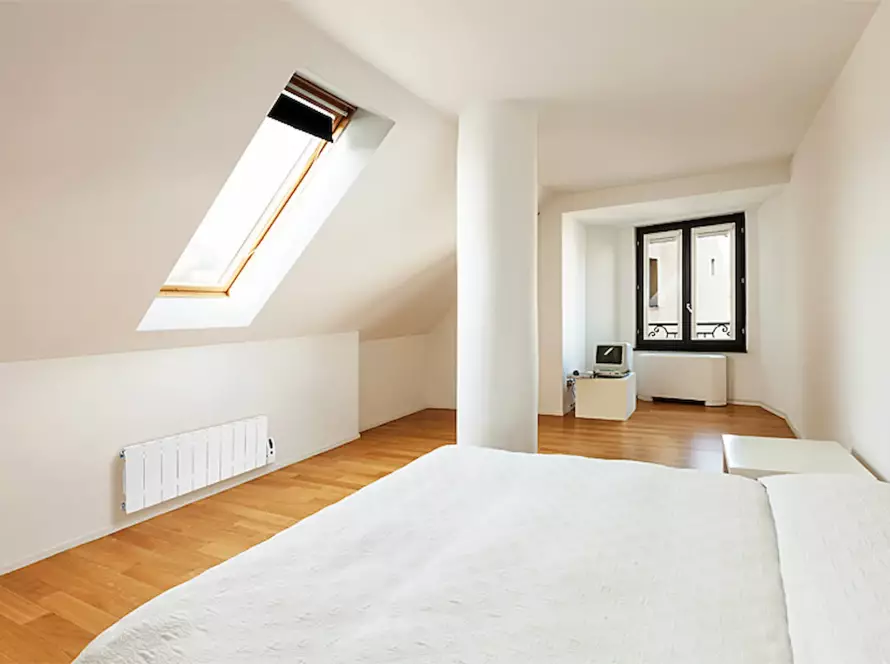
What you need to know
Electricity has been used for decades to heat homes in the UK, however in recent times there has been a revolution in technical features and materials making it a viable cost effective alternative to other energy types such as LPG gas and oil. Traditional electric heating often meant outdated storage heaters or convector panel heaters both of which were difficult to control and expensive to run. Surprisingly these inefficient heaters are still used in many homes around the country helping to reinforce people’s misconceptions that all electric radiators are bad.
The following will help explain the different electric heating options and why they could be the correct choice for your home.
Types of Electric Heaters
Storage heaters are still available today but have changed to comply with the latest LOT20 energy efficiency regulations. In order to achieve the required standard manufacturers have in effect added a simple ‘on demand’ electric heating element to top up the storage heater bricks when they lose their heat during the daytime. Many of us remember an overly hot home in the morning and turning to the fan heater for the chilly evenings. Thankfully things have improved since then with better controllers; however they have their drawbacks such as needing two electricity supplies, their size, price and running costs.
Electric convector panel heaters and fan heaters are available at very low cost, but there’s a reason for this. Often they are produced from cheap materials and have very little in the way of control – as they are freestanding they are except from the LOT20 energy saving regulations and can therefore be very expensive to run. This type of heater relies on are passing over a very hot element which causes dust to burn leaving uncomfortable soot particles in the air drying the atmosphere and leading to dry eyes and sinuses.
Radiant Panel and Infra-red heaters work by directly warming objects and people in the room, in a similar way to the sun when it shines. The wavelength of the heat can differ with some being designed for outside use, such as electric patio heaters and some are gentler for use indoors. These heaters don’t dry the atmosphere and have very fast heat up times making them perfect for room that are used infrequently or as ‘spot’ heating areas.
Electric radiators are the best choice for rooms that will be used for longer periods of time as they produce a very comfortable mix of radiant and convection heat, similar to traditional gas hot water system. The choice of materials is very important, so rather than just adding an electric heating element to a steel wet system radiator it is better to use aluminium. This brings many advantages including better heat transfer from the heating element, more efficient shape of the actual radiator and of course no rust.
Thermostats and Programming
Mechanical thermostats consist of two metal strips that expand and contract at different rates, which when joined together bend depending on the temperature; this switches the heater on or off and should maintain the room temperature. Being very simple they are cheap to produce but not very accurate, typically room temperatures will fluctuate by 2 or 3°c. When we are happy to sit in a room at 21°C the temperature could rise to 24°C before the heater switches off, therefore using more electricity and increasing electricity bills.
Digital thermostats are considerably more accurate often using a sensor which is accurate to 0.2°C, this helps to reduce running costs and improves general feelings of comfort. The temperature sensor is connected to a printed circuit board (PCB), which controls when the radiator is switched on or off.
The PCB switch can be either manual (a relay) or electronic (TRIAC), both are very good but the TRIAC can be controlled with sophisticated electronics to improved efficiency further.
What should I consider when buying my electric heaters?
The different types of electric radiators and heaters available today deliver the heat in different ways so it’s important to understand the differences and choose one that suits the task in hand. For instance, if you want to heat a garden patio don’t choose an electric radiator as the heat will simply blow away into the atmosphere; in this instance you would be better to choose a infra-red heater.
If you have a conservatory with a large proportion of glass that is used occasionally you would be better to choose a radiant panel heater with exceptionally fast heat up times rather than a storage heater.
In addition to the way the heat is delivered, you also need to consider how you want to control the heater. The fast acting radiant panel heater could be switched on manually or via a simple plug in timer a few minutes before you intend to use the room.
For a whole house system, you may need more than one temperature setting in order to switch rooms on and off or up and down automatically. Adding these features can make it difficult to programme so be sure to check the system carefully. Take a look at the Ducasa Smart-Command and Avant DGi+ App system for the ultimate in control with intuitive, simple programming screens.
LOT20 regulations forced many manufactures to add features such as programming and open window sensors to make them compliant. The result has been an influx of electric radiators that are simply too complicated making it virtually impossible to just switch them on or off. The Ducasa Avant DGS is fully compliant but doesn’t have the multitude of buttons and dials of some models. A simple plus and minus button for use as a manual heater and 7 pre-set programmes accessed by pressing the plus and minus button for 30 seconds.
Digital thermostats are a better choice if you are heating rooms for long periods of time. However, a mechanical thermostat will work well in a room that’s used less frequently such as a conservatory or when a simple spot heater is required to boost an area such as a study.
Some suppliers only have one type of heater, such as an electric radiator so may be tempted to recommend the product just to get the sale, not because it’s the right solution for your needs. At Ducasa we have a choice and if we don’t think we can help we’ll say so.
Should I change to electric heating?
Electric heating makes more sense nowadays for many reasons including advances in electronics and improved insulation levels in our homes, so in many cases it is worth changing… but not all!
If you have mains gas available to your property and the insulation levels are poor then it’s probably worth using a traditional boiler and wet system radiators. That said there may be exceptions, for instance if you have problems with boiler location and associated flues or if you are looking at the lifetime costs of your system, rather than just monthly energy bills.
The lifetime costs of electric radiators can be less expensive than a gas system because the initial install costs are lower and there is no boiler needing expensive servicing and periodic replacement. With a typical life expectancy of say 20 years for electric radiators, the costs for a boiler system could exceed £7,000.
Oil or LPG fired wet central heating have similar drawbacks however the install costs are even higher and the cost of fuel can be volatile meaning there may not be any monthly energy savings. Add replacement oil or gas tanks and the worry of theft and leaks, electric radiators once again provide an attractive proposition.
Air source of ground source heat pumps are growing in popularity although they are comparatively very expensive to install and often don’t produce the cheap heat they promise. The temperature of the water is low compared to gas boilers so the time to heat a home from cold to a comfortable level can be extreme. Therefore they are more effective if left on 24/7 – ok if you are at home all day and your property is well insulated but if not running costs can be higher than expected. Controls for this type of heating system can be complicated and it not set up properly this can add to the running cost.
With the growing scarceness and pollution associated with fossil fuels, electricity is without a doubt the choice of the future. As renewable schemes such as wind and solar become more efficient the cost of electricity is likely to reduce in caparison with natural gas, oil and LPG.
If you would like to learn more about Ducasa electric heaters, click this button to explore!



